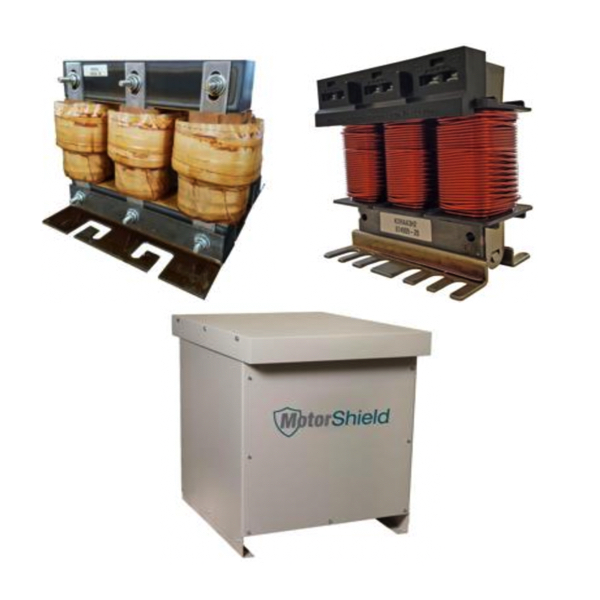VFD & Motor Protection

Variable Frequency Drives (VFDs) are widely used to control the speed and torque of AC motors by adjusting input voltage and frequency. While VFDs offer precise motor control and energy savings, proper motor protection is essential to ensure long-term reliability and prevent damage to motors and connected equipment. VFD and motor protection devices such as line reactors, load reactors, and harmonic filters play a key role in maintaining stable electrical performance.
Line reactors are installed on the input side of a VFD to reduce harmonics, limit inrush current, and protect drives from voltage transients and power surges. Load reactors are installed on the output side of the VFD to reduce motor heating, limit reflected wave voltage, and protect motor windings, especially in applications with long motor cable runs. Harmonic filters help mitigate electrical distortion caused by VFDs, improving power quality and reducing stress on upstream electrical equipment. In addition to external protection devices, VFDs incorporate built-in motor protection features such as overload protection, short circuit protection, stall prevention, and current limiting. Advanced VFDs monitor motor parameters including current draw, winding temperature, and motor nameplate data to ensure operation within safe limits. Proper selection, sizing, and installation of VFD motor protection components are critical to maximizing system efficiency, reducing downtime, and extending equipment life.
FAQs
Q: What is the purpose of line reactors in VFD systems?
Line reactors reduce harmonics, limit inrush current, and protect VFDs from voltage spikes and power disturbances on the supply side.
Q: What is the difference between line reactors and load reactors?
Line reactors are installed on the input side of a VFD, while load reactors are installed on the output side to protect motors from voltage stress and reflected wave issues.
Q: Do VFDs provide built-in motor protection?
Yes, VFDs include protection features such as overload protection, short circuit protection, stall prevention, and current limitation.
Q: What are harmonic filters used for?
Harmonic filters reduce electrical distortion caused by VFDs, improving power quality and protecting upstream electrical systems.
Q: What information is shown on a VFD diagram?
A VFD diagram typically includes the power supply, rectifier, DC bus, inverter, control section, motor connections, and associated control signals.
Why Buy VFD & Motor Protection Products from RSP Supply
RSP Supply offers a comprehensive selection of VFD and motor protection solutions including line reactors, load reactors, and harmonic filters. Our products support reliable drive operation, improved power quality, and long-term motor protection across industrial automation and motor control applications.

